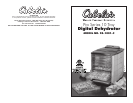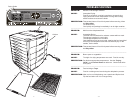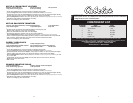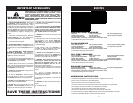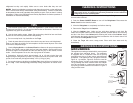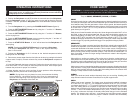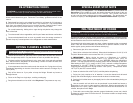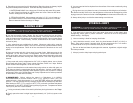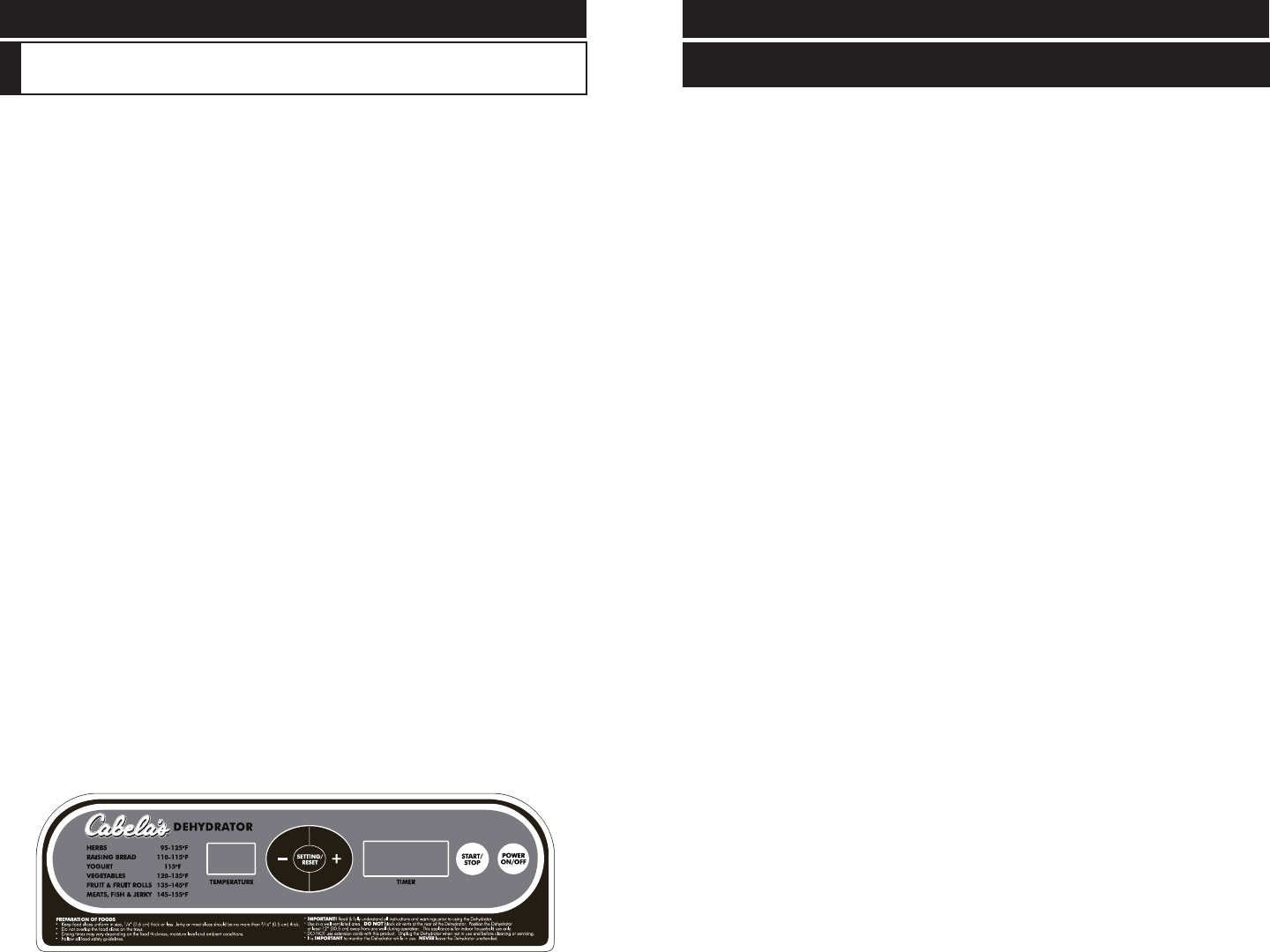
-11-
-6-
OPERATING INSTRUCTIONS
1. Plug the Dehydrator into a standard 120 Volt, 60 Hz wall outlet.
2. Position the Dehydrator as to NOT block the air vents at the rear of the Dehydrator.
Keep the Dehydrator at least 12” (30.5 cm) away from any wall to allow for proper air
circulation. DO NOT operate the Dehydrator on or near ammable surfaces such as
carpeting.
3. Turn the Dehydrator on by pressing the POWER ON/OFF Button (gure A).
4. Press the SETTING/RESET Button and by using the “-” and the “+” Buttons,
set the desired temperature.
5. Press the SETTING/RESET Button and by using the “-” and the “+” Buttons,
set the drying hours.
6. Press the SETTING/RESET Button once more and by using the “-” and the “+”
Buttons, set the minutes (in 5 minute increments).
7. Press the START/STOP Button. A “click” will be heard and the Dehydrator will
start cycling.
NOTE:Pressing the START/STOP Button will not pause the Dehydrator,
it will stop the Dehydrator and reset it. Refer to the “Special Start/Stop
Note” in this booklet.
8. Preheat the Dehydrator for 5-10 minutes at the desired temperature before
loading food onto the Trays.
9. Remove any excess water from the food (this can be done by patting the food with
a paper towel or napkin). Excess moisture may cause the Dehydrator temperature
to drop.
10. Load the Trays with the items to be dried. Position the pieces so that they do not
touch each other. Do not overlap or allow the product to touch. Allow ample space
between the products for proper air circulation.
11. Water droplets may form on the surface of some products while dehydrating.
Periodically blot the product with a clean paper towel.
NOTE: Drying times may vary based on many circumstances including
but not limited to: the relative humidity of the room, the temperature of
the food at the beginning of the drying process, the amount of food in the
Dehydrator, the leanness of the meat, etc.
FOOD SAFETY
WARNING!! Before cleaning or servicing the Dehydrator, make sure it is unplugged
from the power source. It is important to read & fully understand all of the instructions
& safeguard prior to use of the Dehydrator.
!
Figure A
There are basic rules to follow when handling food.
They are COOK,SEPARATE,CLEAN, and CHILL.
COOK
It’s crucial to cook food to a safe internal temperature to destroy bacteria that is present.
The safety of hamburgers and other foods made with ground meat has been receiving a
lot of attention lately, and with good reason. When meat is ground, the bacteria present
on the surface is mixed throughout the ground mixture. If this ground meat is not cooked
to at least 160
o
F to 165
o
F (71
o
C to 74
o
C), bacteria will not be destroyed and there’s a
good chance you will get sick.
Solid pieces of meat like steaks and chops don’t have dangerous bacteria like E. coli on
the inside, so they can be served more rare. Still, any beef cut should be cooked to an
internal temperature of at least 145
o
F (63
o
C) (medium rare). The safe temperature for
poultry is 180
o
F (82
o
C) and solid cuts of pork should be cooked to 160
o
F (71
o
C). Eggs
should be thoroughly cooked too. If you are making a meringue or other recipe that uses
uncooked eggs, buy specially pasteurized eggs or use prepared meringue powder.
SEPARATE
Foods that will be eaten uncooked and foods that will be cooked before eating MUST
ALWAYS be separated. Cross-contamination occurs when raw meats or eggs come in
contact with foods that will be eaten uncooked. This is a major source of food poisoning.
Always double-wrap raw meats and place them on the lowest shelf in the refrigerator so
there is no way juices can drip onto fresh produce. Then use the raw meats within 1-2
days of purchase, or freeze for longer storage. Defrost frozen meats in the refrigerator,
not on the counter.
When grilling or cooking raw meats or sh, make sure to place the cooked meat on a
clean platter. Don’t use the same platter you used to carry the food out to the grill. Wash
the utensils used in grilling after the food is turned for the last time on the grill, as well as
spatulas and spoons used for stir-frying or turning meat as it cooks.
Make sure to wash your hands after handling raw meats or raw eggs. Washing hands with
soap and water, or using a pre-moistened antibacterial towelette is absolutely necessary
after you have touched raw meat or raw eggs. Not washing hands and surfaces while
cooking is a major cause of cross-contamination.
CLEAN
Wash your hands and work surfaces frequently when you are cooking. Washing with
soap and warm water for at least 15 seconds, then dry with a paper towel.
CHILL
Chilling food is very important. The danger zone where bacteria multiply is between
40
o
F and 140
o
F (4
o
C and 6
o
C). Your refrigerator should be set to 40
o
F (4
o
C) or below;
your freezer should be 0
o
F (-17
o
C) or below. Simple rule: serve hot foods hot, cold foods
cold. Use chang dishes or hot plates to keep food hot while serving. Use ice water
baths to keep cold foods cold. Never let any food sit at room temperature for more than
2 hours - 1 hour if the ambient temperature is 90
o
F (32
o
C) or above. When packing
for a picnic, make sure the foods are already chilled when they go into the insulated
hamper. The hamper won’t chill food - it just keeps food cold when properly packed
with ice. Hot cooked foods should be placed in shallow containers and immediately
CAUTION! It is important to follow the “Food Safety” guidelines outlined in this
manual. For the most up to date instruction visit the USDA website.



